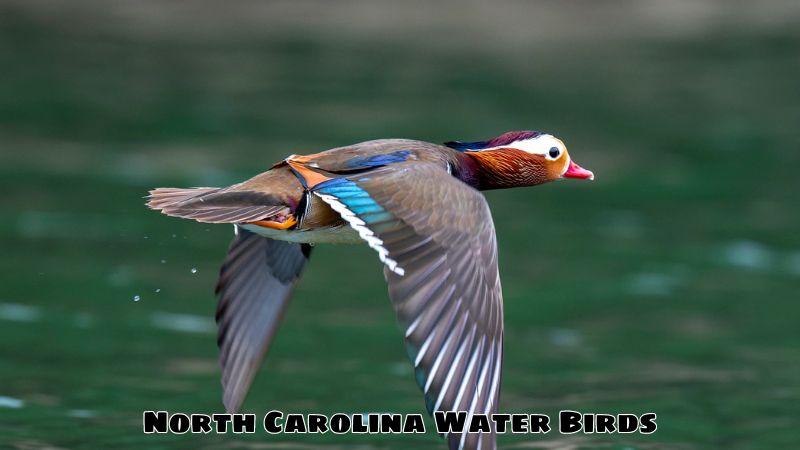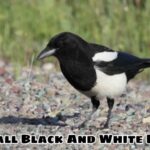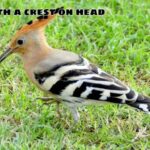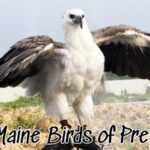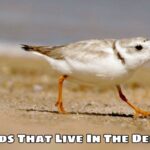North Carolina, with its long coastline and diverse coastal ecosystems, is home to countless species of waterfowl. They provide a vivid picture of the richness of nature, play an important role in maintaining ecological balance and contribute to the unique beauty of this land.
This article by Exoticbirdscorner will take you to explore the world of North Carolina Water Birds, from their unique biological characteristics, interesting living habits to their important role in the ecosystem. At the same time, we will also learn about the risks facing waterfowl and the conservation efforts being deployed to protect these beautiful creatures.
Introduction to North Carolina Water Birds
North Carolina waterfowl are an extremely diverse group of birds, including many different species that inhabit the coastal areas, rivers, lakes and wetlands of the state of North Carolina. Some common waterfowl species here include herons, storks, ducks, geese, gulls and loons.
This group of birds plays an important role in maintaining a balanced ecosystem. They help control populations of small animals such as insects, fish and rodents, helping to prevent disease outbreaks and protect crops. Waterbirds also participate in the dispersal of plant seeds, promoting the growth of forests and coastal vegetation.
In addition, waterfowl are also a source of inspiration for eco-tourism and local culture. Many people enjoy bird watching and participating in outdoor recreational activities involving waterfowl.
However, due to shrinking habitat and pollution, many North Carolina waterfowl species are facing extinction. Protecting habitat and raising awareness of the importance of waterfowl are essential to conserving biodiversity and maintaining healthy coastal ecosystems.
Biological characteristics of North Carolina waterfowl
North Carolina waterfowl vary in size and shape, from tiny birds weighing only a few grams to large gulls with wingspans of up to 2 meters. Their colors are also rich, with many different colors such as white, black, brown, gray, blue, red and yellow.
In terms of food sources, North Carolina waterfowl have a varied diet depending on the species. Some species are carnivores, specializing in hunting fish, crustaceans, insects and small animals. Other species eat seeds, fruits and young shoots. Some waterbirds are omnivorous, combining many different types of food.
Waterfowl hunting methods are also very diverse. Some species use long beaks to grope in the mud looking for food, others use sharp beaks to catch fish, and some use powerful wings to dive into the water to catch prey.
The variety of sizes, shapes, colors and hunting methods of North Carolina waterfowl contribute to the richness and appeal of coastal ecosystems.

Unique living habits of North Carolina waterfowl
Many North Carolina waterfowl species are active mainly during the day, taking advantage of sunlight to feed and survive. However, some species may also be active at night, especially predators such as owls and herons.
During the breeding season, waterfowl often gather in large flocks and build nests on tree branches, rock holes or along the coast. Together they take care of their young and protect the nest from enemies.
North Carolina waterfowl are capable of migrating long distances in search of abundant food sources and more suitable habitat. Some species migrate seasonally, flying from North Carolina to the Caribbean or South America to escape the cold.
To search for new habitats, waterfowl use sensitive senses such as sight, hearing and smell. They can fly thousands of kilometers and find locations with suitable food sources and habitat.
Waterbird migration plays an important role in maintaining biodiversity and ecosystem balance.
Importance and role in ecosystem ecology
North Carolina waterfowl play a vital role in maintaining coastal ecological balance. As an essential part of the food chain, they help control populations of small animals such as insects, fish and rodents, helping to prevent disease outbreaks and protect crops.
In addition, waterfowl also participate in the process of dispersing tree seeds, promoting the growth of forests and coastal vegetation. They also play an important role in water recycling and filtration, minimizing coastal erosion and siltation.
Waterbirds have close relationships with other creatures in their habitat. They are a food source for predators such as hawks, snakes and large fish. Bird droppings provide nutrients for plants to grow, contributing to biodiversity in the ecosystem.
The presence of waterfowl is also an important indicator of the health of the environment. When waterbird numbers decline, this can be a sign that the environment is being polluted or affected by human activities.
Protecting North Carolina waterfowl and their habitat is a shared responsibility of each individual and community. We need to join hands to protect coastal ecosystems, reduce environmental pollution and build safe habitats for waterfowl.
Potential risks and conservation efforts for North Carolina waterfowl
The survival of North Carolina’s waterfowl faces many serious threats, including:
- Habitat loss: Due to urban development, resource exploitation and climate change, waterfowl are losing familiar habitats such as wetlands, flooded forests and coastal areas.
- Environmental pollution: Industrial and agricultural activities and the use of toxic chemicals have contaminated water sources and food for waterfowl, leading to poisoning and dangerous diseases.
- Hunting: Illegal hunting of waterfowl still occurs, directly affecting the number of individuals and the reproductive ability of birds.
- Climate change: Rising sea levels, storms, floods and droughts due to climate change threaten the habitat and food sources of waterfowl, making it difficult for them to survive and migrate.
To protect North Carolina waterfowl and limit these risks, practical measures are needed such as:
- Protect and restore habitat: Important areas for waterfowl such as wetlands, flooded forests and coastal areas need to be protected. At the same time, carry out programs to restore degraded habitats.
- Minimize environmental pollution: It is necessary to strictly control industrial and agricultural activities, limit the use of toxic chemicals, and effectively treat wastewater to protect water sources and food for waterfowl.
- Strictly enforce the law: It is necessary to strengthen the enforcement of laws on wild bird protection and strictly punish illegal bird hunting.
- Raise public awareness: Raise public awareness about the importance of waterfowl and their role in the ecosystem. Encourage people to participate in activities to protect waterfowl and their habitat.
Conservation of North Carolina waterfowl is a shared responsibility of every individual, organization and government. Joining hands to protect waterfowl and their habitats contributes to maintaining ecological balance and protecting coastal ecosystems for future generations.
Epilogue
North Carolina waterfowl are an incredibly diverse group of birds and play an important role in coastal ecosystems. They contribute to maintaining ecological balance, protecting the living environment and are a source of inspiration for ecotourism. However, the existence of waterfowl is threatened by many risks.
We need to raise awareness about the importance of waterfowl, implement habitat conservation measures, and promote public education activities. Protecting North Carolina’s waterfowl protects our own habitat and helps build a sustainable future for future generations.

